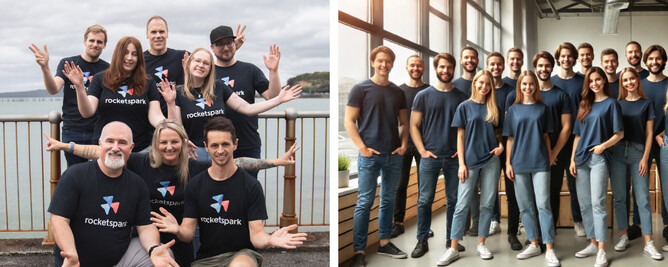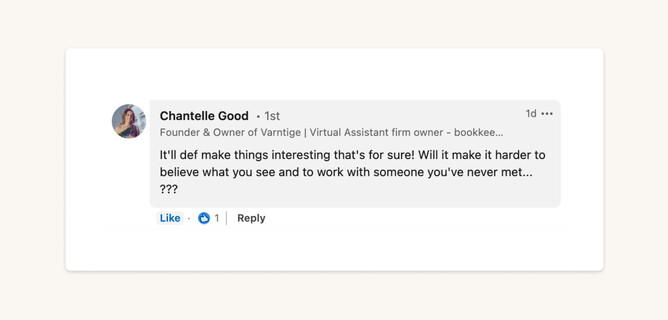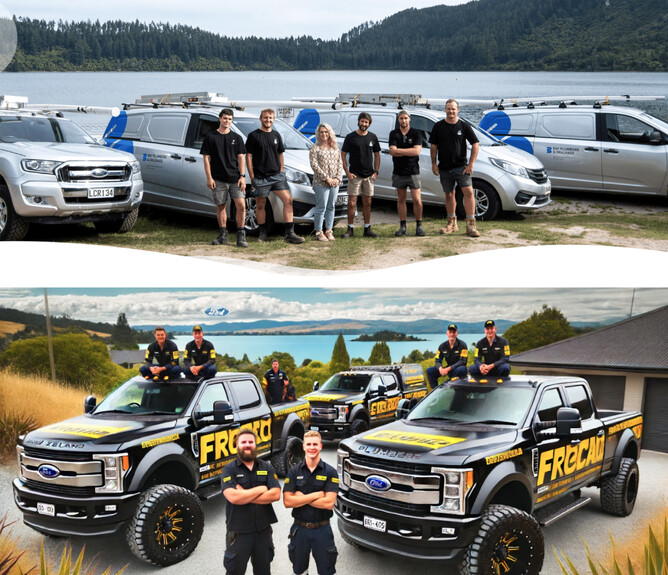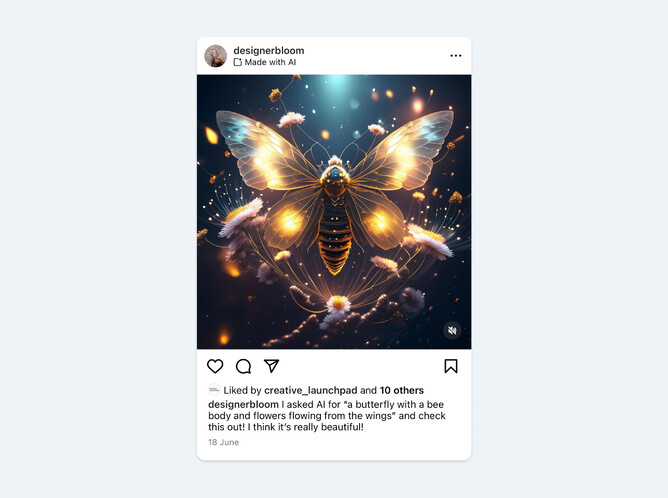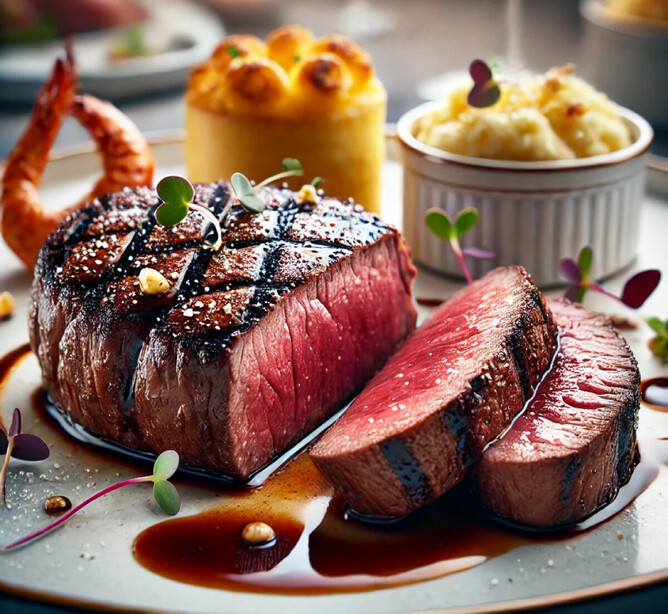In an era where artificial intelligence (AI) is reshaping industries, the use of AI-generated images has become a hot topic. While AI offers tremendous potential for creativity and efficiency, it also raises ethical questions, particularly when the generated images are used to represent people, products, or premises. Here, we explore the ethics of using AI images in various business scenarios and contrast these practices with traditional photography.
Caption: (Left) The author. (Right) AI representation of the author. In the words of Derek Zoolander, “Why male models?” All AI generated images of men tend to look like David Beckham.
1. Photos of Your Team: Authenticity vs. Artificial Representation
Scenario: Using AI-generated images to represent team members who don't actually exist.
Caption: The clone wars.
Ethical Considerations:
Trust and Authenticity: Customers and clients value authenticity. Using AI-generated images to represent your team can erode trust if discovered, as it creates a false narrative about who is behind your business.
Transparency: Misrepresenting your team can be seen as deceptive. Transparency about who your team members are is crucial for building genuine relationships with clients.
Contrasted with Effective Photography:
Real Connections: Authentic photos of your actual team foster real connections and trust. Clients appreciate knowing who they are working with, which can enhance loyalty and satisfaction.
2. Photos of Example Work: AI-Generated Craftsmanship
Scenario: Using AI to generate images of example work for a trade services business or builder.
Ethical Considerations:
Accuracy and Integrity: Showcasing AI-generated work that doesn’t reflect your actual craftsmanship can mislead customers. Unlike stock photos, AI images can be tailored to appear as your unique work, increasing the potential for deception.
Quality Assurance: Clients rely on example work to gauge your capabilities. Misrepresenting your skills can lead to dissatisfaction and harm your reputation.
Contrasted with Effective Photography:
Honest Representation: High-quality photos of your genuine work highlight your skills and build credibility. Potential clients can see the true quality of your craftsmanship, leading to realistic expectations and satisfaction.
3. Photos of Premises: From Small Edits to Major Enhancements
Scenario: Using AI to edit photos of your premises, ranging from removing a dumpster to making the premises look more sophisticated than it is.
Ethical Considerations:
Misleading Enhancements: Minor edits to improve aesthetics (like removing temporary eyesores) might be acceptable, but significant alterations that misrepresent your premises can deceive clients.
Expectation Management: Clients might feel misled if the actual premises differ significantly from the AI-enhanced images, potentially damaging trust.
Contrasted with Effective Photography:
Realistic Expectations: Authentic photos, even if imperfect, set accurate expectations. Enhancing photos should be limited to improving quality (like lighting) without altering the essence of the premises.
4. AI-Generated Mockups: Vehicles, Signage, Uniforms, and Products
Scenario: Creating AI-generated mockups of vehicles, signage, uniforms, or products that do not actually exist.
Ethical Considerations:
Imaginary Products: While mockups can help visualise ideas, presenting them as existing items can mislead customers about what you offer.
Innovation vs. Deception: It’s important to clarify that these are conceptual designs and not actual products, maintaining transparency with your clients.
Contrasted with Effective Photography:
Prototypes and Real Samples: Photographs of real prototypes or samples provide a tangible sense of what clients can expect, building trust and confidence in your brand.
5. Using AI for artistic inspiration and surrealist images
Sara-Jane Austen from Designerbloom recently shared a fascinating image on Instagram, showing how she used AI to spark her creative process. AI can blend 3D rendering, photo manipulation, and illustration in ways that might be too complex or time-consuming to do manually. Instead of sourcing surrealist images from stock image websites, designers can now use AI to create unique visuals that perfectly match a brand's vision, all in a matter of seconds.
However, there are some things to keep in mind when using AI for image manipulation. Instagram now auto-detects if AI was used to create an image. In Sara-Jane’s case, she’s transparent about using AI as a creative tool. But if AI was only used for minor touch-ups or background changes, having the entire image labelled as AI could affect the client's reputation or the credibility of the image.
6. Food photography and AI—is it real?
Using AI-generated images for cafe or restaurant websites might seem like a quick fix, but it can mislead customers. Here’s why:
Authenticity: AI images don't truly represent the food created by your chef. Customers might feel deceived if what they see online doesn’t match their real-life experience.
Customer Trust: Genuine photos of your dishes build trust and set realistic expectations. AI images, on the other hand, can create a disconnect between what customers see and what they actually get.
By sticking to authentic food photography, you ensure that your website reflects the true quality and appeal of your offerings, building trust and delighting your customers.
The Role of Effective Photography in Small Business
Effective photography in a small business context is about authenticity, transparency, and building trust. High-quality images of real people, genuine work, and actual premises help establish credibility and connect with clients on a personal level. Here’s why:
Genuine Connections: Real photos of your team, work, and premises create a personal connection and build trust.
Accurate Representation: Honest images set realistic expectations, reducing the risk of disappointment and fostering satisfaction.
Credibility: Showcasing your actual capabilities and environment enhances your reputation and credibility.
Conclusion
While AI-generated images offer creative and practical benefits, their use must be balanced with ethical considerations. Misrepresentation, whether intentional or not, can damage trust and credibility. For small businesses, especially in service industries, effective photography remains a powerful tool for building genuine connections and setting accurate expectations. By prioritising authenticity and transparency, businesses can leverage the best of both worlds: the innovation of AI and the integrity of real imagery.

